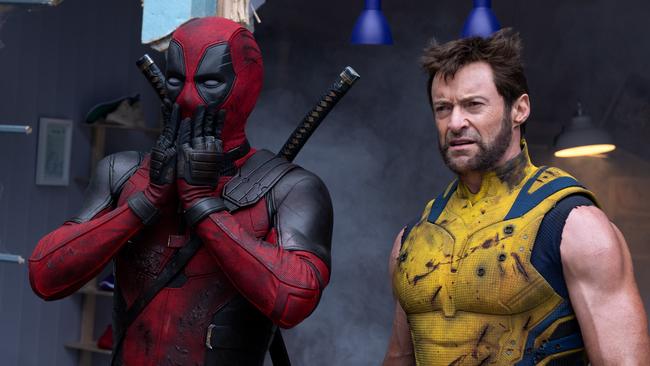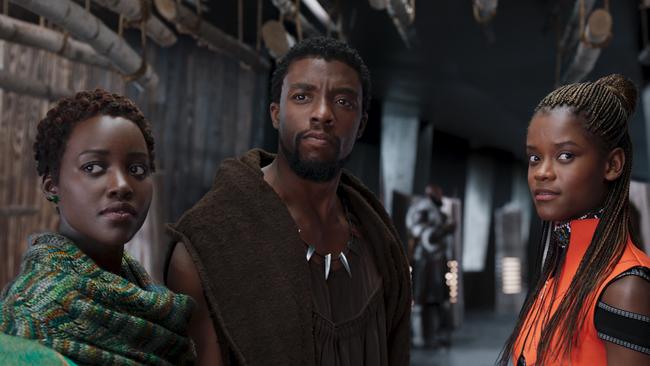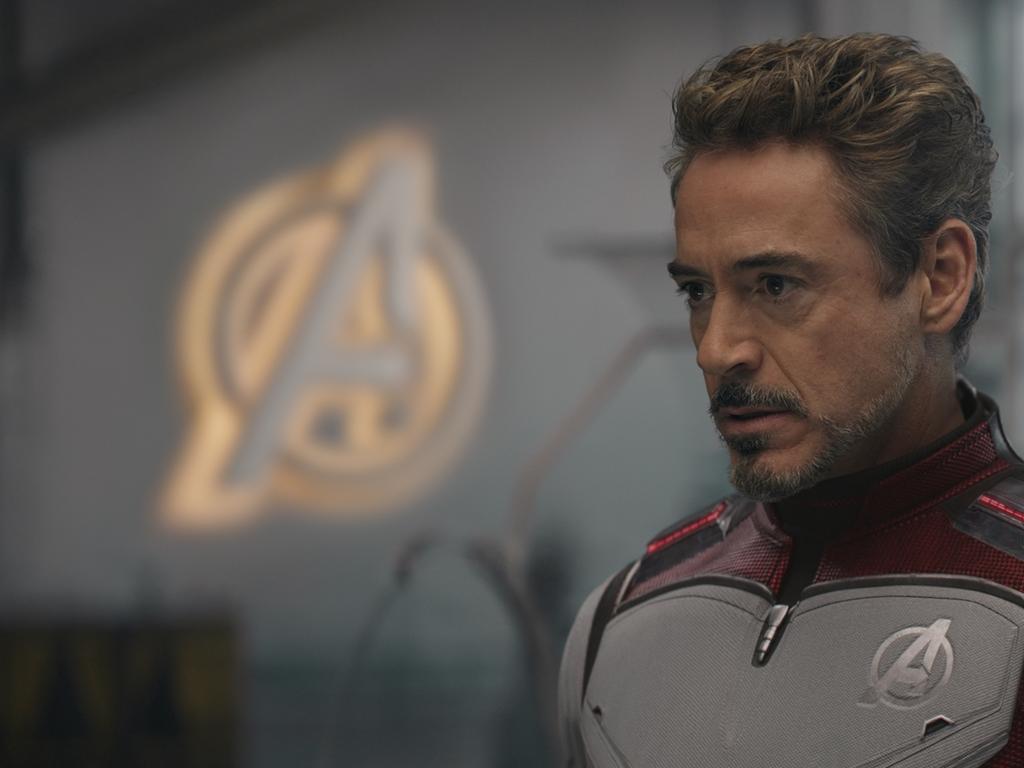Splat! How Hollywood’s superheroes fell to earth
Marvel conquered the box office for 15 years until its recent string of duds. Can cinema reinvent itself without its spandex saviours?

For years – 15 to be precise – Marvel was cinema. Ever since Robert Downey Jr and his sass arrived as Iron Man in May 2008, superheroes who were first scribbled in Marvel comic books have dominated the big screen. You can talk about Boyhood and Parasite all you like, but quality films such as these have been feeding off box-office scraps while a spandex juggernaut has hogged the conversation, physical seats, all of the cash. The studio has made six of the 20 highest-grossing films of all time. Marvel? For your local multiplex, these films have been marvellous.
“People ask, ‘How much longer are movies going to be based on comics?’,” said Marvel boss Kevin Feige in 2014. We were talking during his studio’s peak and he carried a certain well-earned brashness. “And I say, ‘Well, how much longer are films going to be based on novels?’. There are way more comedies every year than superhero movies. More dramas too. We keep showing people that the creativity of the comic publishing universe is infinite.”
Is it, though? Recent years have suggested that, in Hollywood at least, even infinity has its limits. The most recent Marvel movie, last November, was The Marvels – a title greeted with a shrug and less box office than The Nun II. It was Marvel’s 33rd film and, earning $US206m ($312m) worldwide, its worst performer. The Marvels is part of a trend. The least popular Marvel movies – ranking 26th (Ant-Man and the Wasp: Quantumania), 28th (Shang-Chi and the Legend of the Ten Rings), 29th (Eternals) and 30th (Black Widow) – largely hail from the past three years. While there have been hits, the time for certainty – and Feige’s bravado – is over.
Because even if the enormously hyped Deadpool & Wolverine (now in cinemas) takes the money Marvel and parent company Disney expect it to, that film is an anomaly in boasting two bona fide movie stars, Ryan Reynolds and Hugh Jackman, dressed up as household-name superheroes.
Next in line? Next year’s Captain America: Brave New World, which doesn’t even star the original and popular Captain America actor, Chris Evans, and something called Thunderbolts, which gathers a host of second-rank superheroes rather like an England football team picked from the non-leagues.
Soon, then, The Marvels could be unseated from its unwanted throne as the most disastrous Marvel film in history – which begs the question: What happened? How did a rush of bank-busting blockbusters, with 10 films earning more than $1.5bn, start to feel so second-rate?
One simple answer is exhaustion. Between 2009 and 2013 Marvel released on average 1.2 films each year. Between 2016 and 2019 it went up to 2.75 annually. Then, in 2020, Disney launched its streaming service, Disney+, which meant screens big and small were up for grabs. Since 2021, Marvel has released, on average, 3.3 films and 3.7 TV series every year, all interlocking in the so-called Marvel Cinematic Universe that Warner Bros (Batman, Wonder Woman) and Universal (Frankenstein, The Mummy) tried, but failed, to mimic. This volume is catnip for those who see Marvel creator Stan Lee as a scribe equal to William Shakespeare, but an exasperating demand on our time for everyone else.

A feeling of overload is not new – it has just peaked. Over the years, as the grip of superheroes tightened, I spoke to numerous Hollywood A-listers at the end of their tether about the way Thor, Iron Man, Spider-Man and other more tertiary allies had taken oxygen from the sort of bold and original films that got them into acting in the first place.
“I worked 50 years to become a director,” Jodie Foster said in 2016, on the eve of her satirical drama, Money Monster. “It took me that long and I’m going to make a superhero movie? I don’t think so.” According to Matt Damon in 2021, the ecosystem was such because, when DVD sales fell off a cliff and studios needed to make money another way, they turned to international markets. “And if you want a movie to travel big, you want the least amount of cultural confusion,” he said. “So you have the rise of the superhero movie – they’re easy for everybody. They fight three times and the good person wins twice.”
Charlie Kaufman, who wrote knotty classics such as Adaptation, was far less sanguine. “Films historically for children are now films adults see,” he wailed. “Like Batman. Batman! Why are you seeing Batman? You’re an adult … Studios decided it was a better risk model to make one $US200m superhero film than 25 other films. They changed the viewing habits of the public.”
And for years it worked, as the biggest stars – among them Downey Jr, Scarlett Johansson and Benedict Cumberbatch – took Marvel’s cash, while the studio also made A-listers of unknowns. Chris Hemsworth was just a struggling Australian when he was cast as Thor; now he is the seventh-highest-grossing actor. In 2018 the studio diversified with Black Panther and was rewarded with a best picture nomination at the Oscars and $1.9bn at the box office, showing Hollywood the many different ways a hero could look. In 2019 three of the top five highest-grossing films were Marvel. Its behemoth Avengers: Endgame took a cool $4.25bn, just north of the GDP of Belize.
And then the problems started. Since the pandemic Marvel has had only one sure-fire hit – Spider-Man: No Way Home (2021) – and that was co-produced with Sony. I honestly cannot type the words Ant-Man and the Wasp: Quantumania without feeling any hope for the future of the arts fade away, so cannot imagine a world in which a casual fan forks out to see it.
Certain issues have been out of Marvel and Disney’s control. First, Covid. Who knows how much the loss of cinematic momentum in 2020 affected the films, while the consequent rise of Disney+ in homes struggling with home schooling shifted viewers from big screen to small? Second, for three years China stopped releasing Marvel films, a kick in the teeth as the studio had sucked up to the country by casting Chinese actors and setting scenes there. The de facto ban has been lifted, but the box office dent was deep.

Then, in August 2020, there was the death, from cancer, of Chadwick Boseman. He was a majestic actor, the man behind the Black Panther mask, and this vacuum all but ended one of Marvel’s most buoyant properties. Finally, in 2023, actor Jonathan Majors was charged and convicted of assaulting his former girlfriend. Majors played Kang in the Marvel universe, a character the studio was planning its next run of films around. Kang has now been binned.
The biggest problem for Marvel, though, is pure fatigue. It is a studio that, blinded by its own rampant success, just kept on going, clearly unaware of the concept of diminishing returns. It speaks to culture’s obsession with excess – four-hour Taylor Swift gigs, films regularly clocking in at more than three hours – but, by delving deeper into comic books, studio heads forgot that the general public have heard of Spider-Man, but only nerds care about Ant-Man.
On Disney+ $320m was spent on last year’s Secret Invasion but I am not sure anyone saw it. Which is a problem, because the Marvel Cinematic Universe means you must see everything to understand what is going on, turning entertainment into about 115 hours of homework.
“During the pandemic,” says Tim Richards, CEO of Britain’s biggest cinema chain, Vue, “Bob Chapek confused Marvel fans.” Chapek replaced Bob Iger as the boss of Disney in 2020 before, in 2022, being shifted aside for, yes, Iger again. “(Chapek) brought back dead characters and had minor figures given their own shows, and it was confusing for everyone,” Richards says. “A good movie’s success starts with a great story and Marvel was, potentially, just a little oversaturated during the Chapek days. Now the plan is for fewer but better films. With Iger back, part of his strategy is to stop, catch a breath and relaunch.”
Or, as Iger himself said: “We lost some focus.”
Based on advance ticket sales, Richards is confident Deadpool & Wolverine will do well, but points out that the decreased dominance of Marvel has opened up cinemas to greater eclecticism – from Barbie to Oppenheimer, Saltburn to Challengers. Later this year Paddington III, Wicked and Gladiator II will all be released. Less Marvel could lead to a balancing out of the biggest movies against those that are smaller and more original.
That is the optimistic view. Pre-pandemic, analysts believed cinema attendance was already plateauing, as viewers recreated the cinema experience on big TVs in their loungerooms. Post-Covid, it’s a crapshoot. Last year’s box office was vast, but you cannot plan for the one-off that was Barbenheimer. And, while recent second-rate Marvel characters proved the franchise model has its limits, it is a business model that has worked before and studios will try to make work again.

Business analysts still believe the future for cinemas lies in reboots and sequels with high-budget special effects that chains can sell as a superior experience. Next year James Cameron’s third Avatar, another Superman and more Jurassic Park will be released, while two more Star Wars films are due in 2026. A few of these will break a billion. Marvels plans for 2025 include Fantastic Four and Blade reboots, and a fifth (and sixth) Avengers movie is in the works. When Hemsworth told me Marvel “deserves more appreciation” for keeping cinemas afloat for years, he was right. While needing them a little less would be no bad thing, cinema chains are clinging to the hope that their audiences will flock back.
A few years back Quentin Tarantino caught flak after suggesting the stars of superhero films are not the actors but the characters, and that the former are expendable. After all, Spider-Man on the big screen has been played by four actors this century and Marvel, in the past few painful years, has been made hyper aware of who its money-spinners are. So I give it five years, tops, before we see Iron Man, Hulk and Thor relaunched, but with different actors – thus starting the dominance of Marvel all over again, for another 15 years.
The Times







To join the conversation, please log in. Don't have an account? Register
Join the conversation, you are commenting as Logout